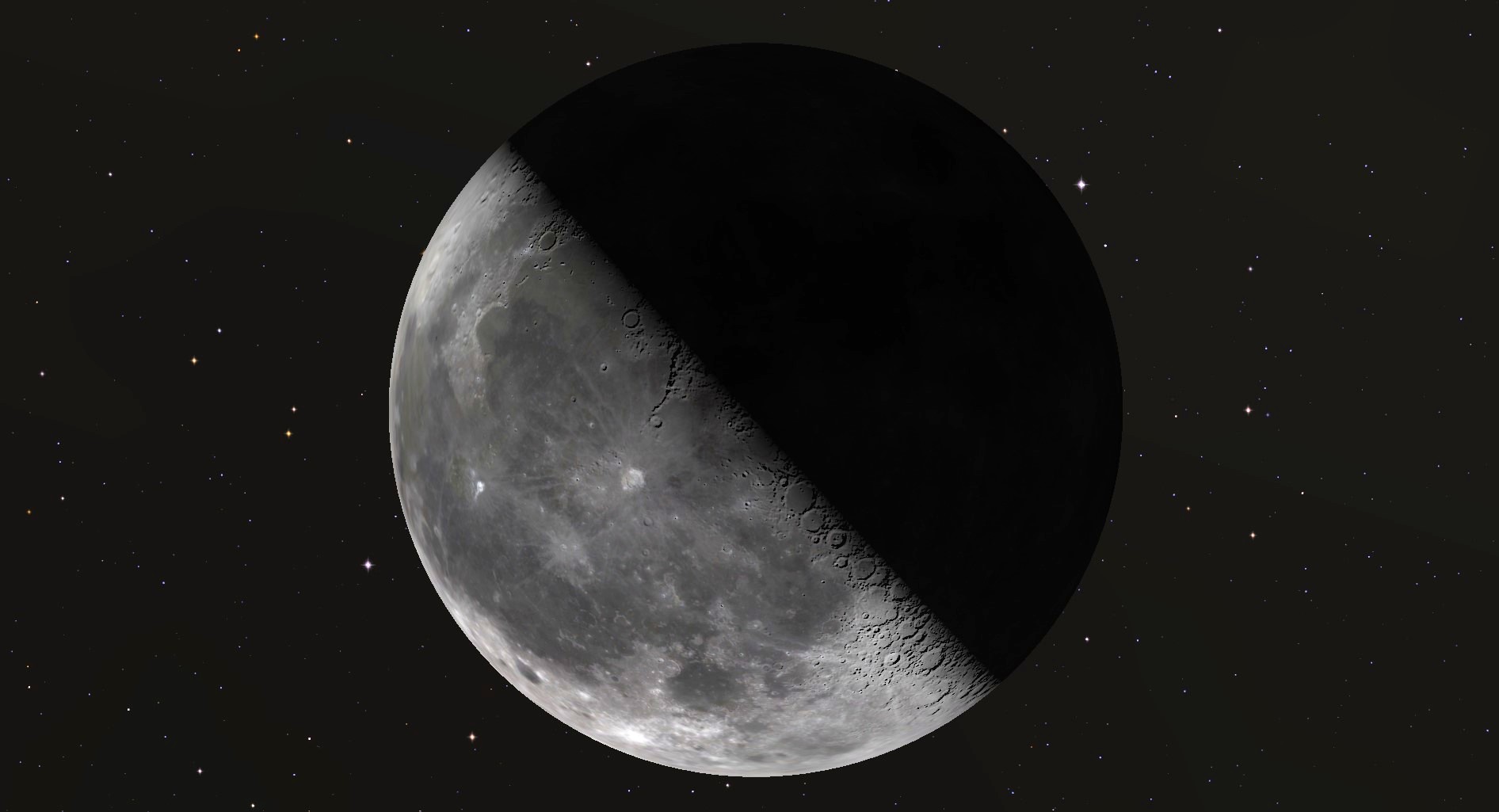A rogue 3-ton piece rocket debris just collided with the moon
Scientists hope a moon orbiter spots the resulting crater soon.

A rogue rocket stage ended its seven-year space odyssey today (March 4), finally slamming into the moon.
The event took place at 7:25 a.m. EST (1225 GMT) on the lunar far side, experts say, meaning it was out of view of ground-based telescopes. NASA's Lunar Reconnaissance Orbiter was likely not in position to get a look at the crash, but the agency has pledged to seek out the resulting crater — a process that could take weeks or months.
That crater, Scientific American suggests, is somewhat near the naturally formed 354-mile-wide (570 kilometers) Hertzsprung Crater.
Today's collision marked the first known unintentional lunar collision involving a piece of space hardware, not counting the probes that have crashed while trying to land on the moon. (NASA steered the third stages of Saturn V moon rockets into the lunar surface during multiple Apollo missions, but those crashes were intentional.)
Lunar mystery: Who launched the rocket that will slam into the moon?
More: The greatest moon crashes of all time
Where exactly the errant rocket stage came from is a matter of some debate. Initial analyses pointed to a SpaceX Falcon 9 rocket, though later looks identified a Chinese launcher as the origin. China has disputed this conclusion, however, illustrating how hard it is to track small objects far from Earth.
The first known prediction of today's moon impact came from astronomer Bill Gray, who runs the Pluto Project program that tracks faraway space objects. Initial calculations by Gray and others suggested that the impactor was the upper stage of the SpaceX Falcon 9 rocket that launched the Deep Space Climate Observatory (DSCOVR) satellite in February 2015.
Get the Space.com Newsletter
Breaking space news, the latest updates on rocket launches, skywatching events and more!
However, Gray later corrected his analysis after discussion with other astronomers, including Jonathan McDowell, a Harvard-Smithsonian Center for Astrophysics astronomer who commonly tracks satellites and space debris. Gray's work and several other independent observations now suggest that the object was in fact part of the Long March 3C rocket that launched China's Chang'e 5-T1 mission mission in 2014.
Chang'e-5-T1 was a technology demonstrator of the more well-known Chang'e 5 mission, which brought a sample of the moon back to Earth in December 2020.
China denies that the moon-bound stage was from their country, an assertion that was initially backed up by United States Space Force data, which suggested that the object had reentered Earth's atmosphere in 2015. But Space Force officials recently confirmed to SpaceNews that the Chang'e 5-T1 stage did not deorbit back then after all; the supposed reentry was an extrapolation, not true tracking data, a scenario that Gray had suggested was the case.
So it's a complicated story, one that could unspool further over time. Scientific discoveries could be part of that story; astronomers are eager to find and study the new crater, to learn more about the near-surface composition and structure of the mysterious lunar far side.
Editor's note: This story was updated at 11:30 a.m. EST (1630 GMT) on March 4 to indicate that the impact has now taken place.
Follow Elizabeth Howell on Twitter @howellspace. Follow us on Twitter @Spacedotcom or on Facebook.
Join our Space Forums to keep talking space on the latest missions, night sky and more! And if you have a news tip, correction or comment, let us know at: community@space.com.

Elizabeth Howell (she/her), Ph.D., was a staff writer in the spaceflight channel between 2022 and 2024 specializing in Canadian space news. She was contributing writer for Space.com for 10 years from 2012 to 2024. Elizabeth's reporting includes multiple exclusives with the White House, leading world coverage about a lost-and-found space tomato on the International Space Station, witnessing five human spaceflight launches on two continents, flying parabolic, working inside a spacesuit, and participating in a simulated Mars mission. Her latest book, "Why Am I Taller?" (ECW Press, 2022) is co-written with astronaut Dave Williams.









